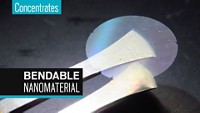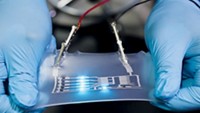Advertisement
Grab your lab coat. Let's get started
Welcome!
Welcome!
Create an account below to get 6 C&EN articles per month, receive newsletters and more - all free.
It seems this is your first time logging in online. Please enter the following information to continue.
As an ACS member you automatically get access to this site. All we need is few more details to create your reading experience.
Not you? Sign in with a different account.
Not you? Sign in with a different account.
ERROR 1
ERROR 1
ERROR 2
ERROR 2
ERROR 2
ERROR 2
ERROR 2
Password and Confirm password must match.
If you have an ACS member number, please enter it here so we can link this account to your membership. (optional)
ERROR 2
ACS values your privacy. By submitting your information, you are gaining access to C&EN and subscribing to our weekly newsletter. We use the information you provide to make your reading experience better, and we will never sell your data to third party members.
Materials
Nanostructures That Heal Themselves
Materials Science: Tiny patterns imprinted on the surface of the polymer Nafion can recover from repeated damage
by Olga Kuchment
July 23, 2013

The iridescence of a butterfly’s wing and the stickiness of a gecko’s foot derive their properties from nanoscale structures on their surfaces. Unlike with those natural materials, nanostructures engineered from synthetic materials often lack the ability to heal themselves when damaged. Now a Singaporean team has imprinted nanopatterns into a shape-memory polymer and found that the patterns can repeatedly recover from damage (Langmuir 2013, DOI: 10.1021/la401621j).
Hong Yee Low, a polymer chemist at the Singapore University of Technology & Design, and her team molded a nanopattern into Nafion, a well-studied fluoropolymer-copolymer. They heated Nafion film at 310 °C for 10 minutes and used a mold to imprint rows of pillars, ranging from 500 nm to 5 μm wide, onto the material. After cooling the polymer to room temperature, the researchers bent the pillars by smudging them with a finger, blasting them with a focused electron beam, or squishing them with a diamond stylus. When the team heated the material to 140 °C, past Nafion’s glass transition temperature, the ruined structures regained their original shape. The structures withstood this damage-and-repair process 25 times.
Towards a possible application, Low is now working to mimic the complex nanopatterns on gecko feet with a polyurethane-based polymer that can heal itself. The materials could lead to a new type of dry adhesive.





Join the conversation
Contact the reporter
Submit a Letter to the Editor for publication
Engage with us on Twitter